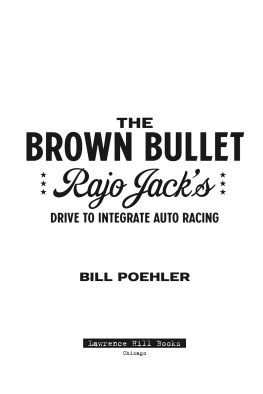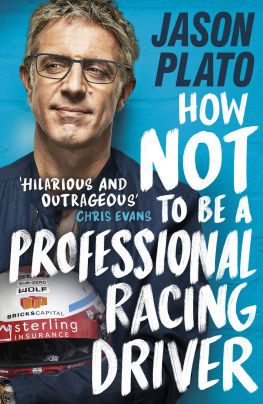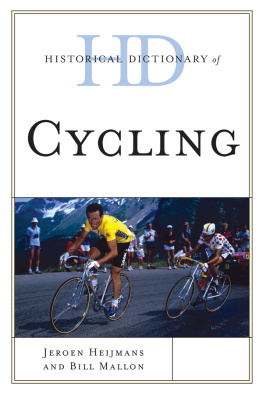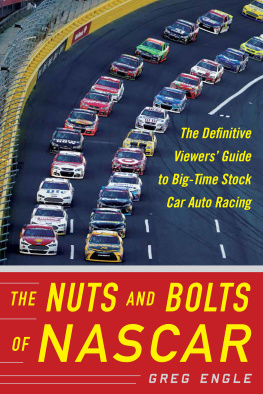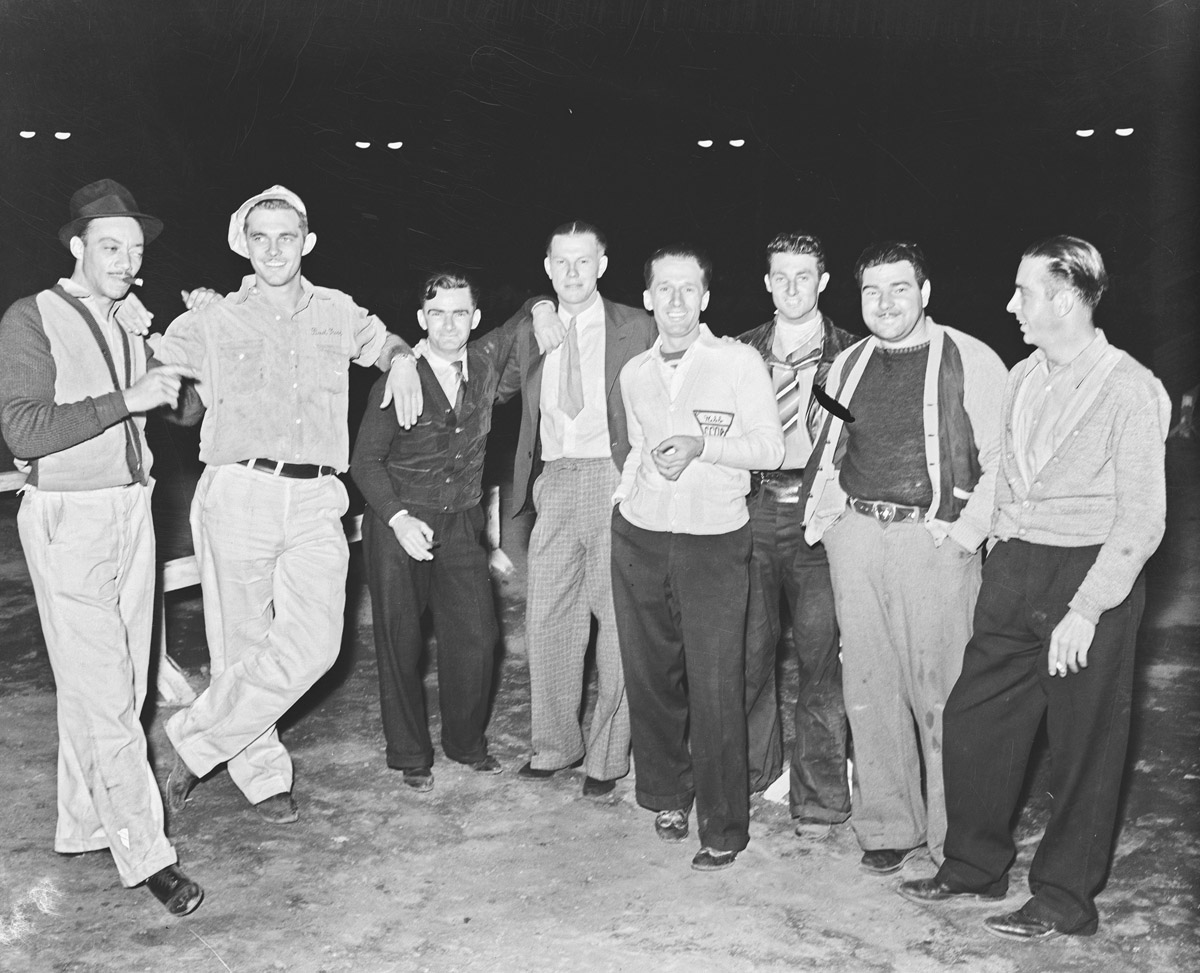Sommaire
Pagination de l'dition papier
Guide
Copyright 2020 by Bill Poehler
All rights reserved
Published by Lawrence Hill Books
Published by Lawrence Hill Books
An imprint of Chicago Review Press Incorporated
814 North Franklin Street
Chicago, Illinois 60610
ISBN 978-1-64160-232-7
Library of Congress Cataloging-in-Publication Data
Is available from the Library of Congress.
Interior design: Nord Compo
Printed in the United States of America
5 4 3 2 1
This digital document has been produced by Nord Compo.
Introduction
The Unlikely Hero
THE SPEEDWAY WAS AN EMBARRASSMENT to the racing world, but to the pesky seven-year-old boy with a mop of curly dark hair it was an oasis in a world that disappointed him at every opportunity.
The kid, large for his age and with a slight southern twang in his voice, landed in California after his family fled Oklahoma during the worst of the Great Depression. His family settled in the Lynwood neighborhood of Los Angeles in 1936, a short walk from the new yet already decrepit Southern Ascot Speedway in the Southgate neighborhood. The kid had no money to pay the steep thirty-five cents for a ticket to the races, but the sound of engines growling at full throat and tires squealing for mercy from his backyard was too much for a speed-obsessed kid to resist.
All the kid knew of racing before arriving in California was the tales his fathera middle-aged man everyone called Popstold of racing at fairground ovals in Dust Bowl states like Oklahoma, Kansas, and Texas in the years before the family went broke. To the kid, those were stories; this was real.
He got his first view of the racing at Southern Ascot Speedway from the active railroad trestle high over the Los Angeles River just beyond turns three and four. Unlike the other Ascot speedways, with movie stars hanging around the pits and acting as trophy girls, Southern Ascot was populated by dreamers and the working poor.
The train trestle wasnt close enough for the kid, so he figured out how to sneak in by climbing under the wood fence surrounding the oval. He had to try it multiple times each race because policemen inevitably caught him and threw him out. When the kid finally made it into the pits in the infield of the track, he pestered the drivers with questions. For men racing at Southern Ascot Speedway, making time for little boys who snuck into the pit areathe rules strictly prohibited children and womenwas not a priority. The boy quickly learned which ones were the best drivers and sought them out. These men had the ambition, desire, and talent to win the biggest races in the world, and they didnt have time for a child who barraged them with questions in the few minutes they had between races.
Rajo Jack was different.
Rajo was the first black man the little boy knew. Rajo cut an imposing figure with his chiseled six-foot-two, 235-pound frame earned through days of backbreaking labor as a mechanic in the heat of southern California. When prompted, he would pick the front end of his fifteen-hundred-pound race car off the ground with no assistance.
Rajo Jack had style. He always wore immaculate white coveralls with Rajo Jack California embroidered in red lettering across the chest to race, while other drivers wore whatever grease-stained clothes they had. Rajos pencil-thin mustache recalled the style of movie stars like Errol Flynn, but Rajo never carried himself like he was better than anyone else. He aspired to be like the other drivers. But he wanted to beat them on the track.
Rajo Jack, Bud Rose, Shorty Scovell, Spider Webb, and other Southern California drivers are joined by George Robson (far right) at a gathering. Ted Wilson photo, Bruce R. Craig Photograph Collection, Revs Institute
Rajo Jack was emerging as a star race car driver in California by the time the kid showed up at Southern Ascot. Rajo became a larger-than-life figure, earning attention wherever he raced for his exploits on the track and the social prejudices he overcame to get on it.
To those in the rest of the racing world, the drivers at Southern Ascot Speedway were nobodies in inferior equipment at a far-off outpost, as far as possible from the temple of speed that was the Indianapolis Motor Speedway. Indy was a grand two-and-a-half-mile oval paved with bricks that played to sold-out crowds of over 150,000 in its covered grandstands each May as the worlds greatest race car drivers tested And Indy was strictly off limits to a black man like Rajo Jack.
Of the grown men engaging in the most dangerous activity of 1936, Rajo Jack was a rare figure. The frequency with which he won races at tracks like Southern Ascotand the fact he was the one black man racing against fields of white driverswas what made Rajo well known. But that wasnt what made him a hero to the young boy.
There were a few who had the patience to at least answer some of my endless questions. One of those, whom Ill never forget, was Rajo Jack. Classed as the greatest Negro driver in the history of auto racing, Rajo was a mighty patient guy. Hed answer my questions, each and every one Id throw at him, Troy Ruttman wrote in 1952, the same year he won the Indy 500.
To Ruttman, his favorite driver at Southern Ascot Speedway was Rajo Jack, one of the many names appropriated by Dewey Gatson. Rajo was different because he was black, but he also stood out because he won big races with style. Every race car driver in 1936and little boys like Ruttman who held them up as heroesdreamed of one day racing in the Indianapolis 500. An unusually large number of drivers, car owners, and little boys hanging around Southern Ascot would race at Indy; some would win it. Rajo Jack possessed the same dream of racing the Indy 500 as the other Southern Ascot drivers.
The reason Rajo Jack never raced at Indy wasnt a lack of skill; it was the color of his skin.
Longing for the Road
THERE WAS SOMETHING UNIQUE ABOUT the first-born child of Noah and Frances Gatson.
The skinny boy had a wide nose and dark hair like his father, but his complexion was light, so light many white people in the East Texas town of Tyler couldnt tell what race he was. The black people of Tyler knew him as the son of Noah and Frances, the best-looking couple on their side of town. When Dewey Gatson was born in 1905, the area had been difficult for black people for the better part of a century and wasnt improving.
When the Emancipation Proclamation took effect in most of the United States on January 1, 1863, the former slaves in Texas were not notified. They wouldnt learn they were free until June 19, 1865. Abraham Lincolns executive order did little else to benefit former slaves. The largest industry in east Texas was farming, especially cotton, which was why the landowners brought the slaves in the first place. The land was almost exclusively owned by white men. Most of the former slaves were granted only their freedom and had few prospects for their future. For many of the formerly enslaved, their former masters gave them an option: live in the accommodations they already occupied and continue to farm the land. They could work a portion of the land with an option to purchase it after a few years. With no education and few skills, many of the former slaves agreed to the arrangement, though it was heavily weighted to the benefit of the white landowners.
The Gaston family rose to prominence before the Civil War by buying up large swaths of land previously thought unfarmable in East Texas and turning it into a booming agricultural operation. They made what seemed unattainable amounts of money off the backbreaking labor of their slaves on the plantations. The GastonsFrench by origin, South Carolinians by emigration, and Texans by choicewere a well-to-do family before the Civil War. Robert Gaston moved his family and twenty slaves to Texas in 1849 and bought 320 acres along the Trinity River, followed soon by other branches of the family. Many of the slaves died along the way, but Robert prospered and served two terms in the Texas legislature. During the Civil War, many farmers in the area went broke as their family members went off to fight, but the Gastons prospered with their large workforce of slaves. After the Civil War, in which many Gaston men were killed or gravely injured, their farming operation continued to grow.

